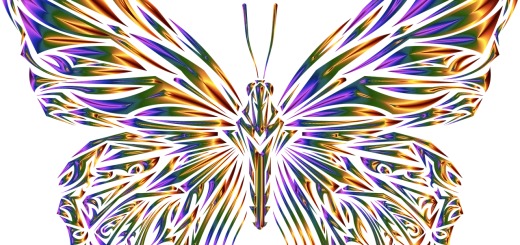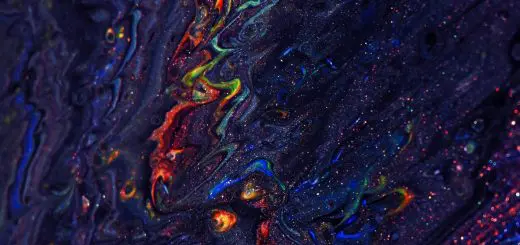Archetypes in Art: Symbols and Themes

Looking for more amazing products? Check out our online store and explore our collection here! Happy shopping!
Before diving in, please note: This post is for informational purposes only. If you’d like to know more about how we approach topics, feel free to check out our friendly Disclaimer Page.
Hey there, amazing readers! 
We’re committed to delivering quality posts, and your support (even just sticking around despite the ads) means everything to us. So, bear with us, and thanks for helping us keep the good vibes rolling. Now, on to the fun stuff!
TRANSLATE BUTTON AT THE END OF THE ARTICLE
Introduction to Archetypes in Art
Archetypes in art are recurring symbols or themes that evoke universal meanings and emotions across different cultures and time periods.
These archetypes tap into the collective unconscious, a concept introduced by psychologist Carl Jung, which suggests that there are shared psychological structures that all humans inherit.
By incorporating archetypes into their work, artists can create pieces that resonate deeply with viewers on a subconscious level.
Understanding these symbols and themes can provide insight into the human experience and offer a glimpse into our shared humanity.
Understanding Symbolism in Art
Symbolism in art is the use of objects, colors, and shapes to represent abstract ideas or emotions.
Artists often use symbols to convey deeper meanings that may not be immediately apparent to the viewer.
By using symbols, artists can communicate complex concepts in a visual language that transcends linguistic barriers.
This allows for a richer and more nuanced interpretation of the artwork, inviting viewers to engage on a deeper level with the piece.
Symbolism in art adds layers of meaning and depth, encouraging viewers to explore the artwork beyond its surface appearance.
Common Archetypes in Art
There are several common archetypes that appear frequently in art across various cultures and historical periods.
Some of these archetypes include:
The Hero: Symbolizing courage, strength, and the triumph of good over evil.
The Mother: Representing nurturing, fertility, and unconditional love.
The Shadow: Signifying the darker aspects of human nature, such as fear, anger, and jealousy.
These archetypes serve as universal symbols that resonate with people from all walks of life, tapping into deep-seated emotions and experiences that are shared by humanity as a whole.
The Hero Archetype in Art
The Hero archetype is a common theme in art and literature, representing the journey of the protagonist as they overcome challenges and obstacles to achieve a goal.
Heroes embody qualities such as courage, perseverance, and selflessness, inspiring viewers to believe in their own ability to overcome adversity.
Artists often use the Hero archetype to tell stories of triumph and victory, highlighting the resilience and strength of the human spirit.
The Hero archetype serves as a powerful symbol of hope and bravery, resonating with audiences on a fundamental level.
The Mother Archetype in Art
The Mother archetype is a symbol of nurturing, compassion, and unconditional love.
In art, the Mother archetype is often depicted as a figure who provides comfort, protection, and guidance to those around her.
Artists use the Mother archetype to explore themes of family, sacrifice, and the bonds of love that connect us all.
The Mother archetype evokes feelings of warmth and security, tapping into our primal need for care and support.
Through the depiction of the Mother archetype, artists can convey the profound impact of maternal love on the human experience.
The Shadow Archetype in Art
The Shadow archetype represents the darker aspects of human nature, including fear, anger, and inner turmoil.
In art, the Shadow archetype is often depicted as a figure of mystery and intrigue, embodying the hidden desires and emotions that lurk within us all.
Artists use the Shadow archetype to explore the complexities of the human psyche, delving into the shadowy depths of the subconscious.
By confronting the Shadow archetype, viewers are invited to confront their own inner demons and fears, leading to a deeper understanding of the human experience.
Archetypal Symbols in Art
Archetypal symbols are recurring images or motifs that hold universal significance and meaning.
These symbols tap into the collective unconscious, evoking deep-seated emotions and associations that transcend cultural boundaries.
Some common archetypal symbols in art include:
The Tree of Life: Representing growth, interconnectedness, and the cycle of life.
The Sun: Symbolizing vitality, warmth, and enlightenment.
The Serpent: Signifying transformation, temptation, and knowledge.
By incorporating archetypal symbols into their work, artists can create pieces that resonate with viewers on a profound and instinctual level, inviting them to explore the deeper meanings and connections within the artwork.
Jungian Archetypes in Art
Carl Jung, a Swiss psychologist, developed the concept of archetypes as universal symbols that reside in the collective unconscious.
Jung identified several key archetypes that appear in myths, legends, and dreams across different cultures.
Some of these Jungian archetypes include:
The Wise Old Man: Symbolizing wisdom, knowledge, and guidance.
The Trickster: Representing chaos, mischief, and transformation.
The Anima/Animus: Reflecting the feminine and masculine aspects of the psyche.
These Jungian archetypes serve as fundamental symbols that shape our understanding of the world and ourselves, providing a framework for exploring the depths of the human psyche through art.
Goddess Archetypes in Art
Goddess archetypes are symbols of femininity, power, and divine energy that have been revered in various cultures throughout history.
These archetypes embody qualities such as creativity, fertility, and intuition, inspiring artists to explore the multifaceted nature of womanhood.
Goddess archetypes can take on many forms, from nurturing mother figures to fierce warrior goddesses, each representing different aspects of the feminine experience.
By depicting goddess archetypes in art, artists celebrate the strength and beauty of women, inviting viewers to connect with the divine feminine within themselves.
Religious Archetypes in Art
Religious archetypes are symbols and themes that hold sacred significance within various spiritual traditions and belief systems.
These archetypes often represent divine beings, sacred symbols, and mythological narratives that are central to religious practices and rituals.
Artists use religious archetypes to explore themes of faith, devotion, and transcendence, inviting viewers to contemplate the mysteries of the divine.
Religious archetypes in art serve as a bridge between the material and spiritual realms, offering a glimpse into the transcendent beauty and complexity of religious experience.
Nature Archetypes in Art
Nature archetypes are symbols and themes inspired by the natural world, reflecting the beauty, power, and harmony of the environment around us.
Artists often draw upon nature archetypes to explore themes of growth, renewal, and interconnectedness with the earth.
These archetypes can take the form of animals, plants, landscapes, and natural phenomena, each symbolizing different aspects of the natural world.
By incorporating nature archetypes into their work, artists celebrate the wonder and majesty of nature, inviting viewers to connect with the elemental forces that shape our world.
Conclusion: Importance of Archetypes in Art
Archetypes in art play a vital role in connecting viewers to the deeper layers of meaning and emotion within a piece.
By incorporating common archetypes, such as the Hero, Mother, and Shadow, artists can create works that resonate with audiences on a universal level, tapping into shared experiences and emotions.
Understanding archetypes in art allows viewers to explore the complexities of the human psyche, delving into themes of courage, love, and inner turmoil.
Through the use of archetypal symbols and themes, artists can transcend linguistic barriers and cultural differences, creating pieces that speak to the fundamental truths and emotions that unite us all.
In this way, archetypes in art serve as a powerful tool for exploring the depths of the human experience and celebrating our shared humanity.

The Enlightenment Journey is a remarkable collection of writings authored by a distinguished group of experts in the fields of spirituality, new age, and esoteric knowledge.
This anthology features a diverse assembly of well-experienced authors who bring their profound insights and credible perspectives to the forefront.
Each contributor possesses a wealth of knowledge and wisdom, making them authorities in their respective domains.
Together, they offer readers a transformative journey into the realms of spiritual growth, self-discovery, and esoteric enlightenment.
The Enlightenment Journey is a testament to the collective expertise of these luminaries, providing readers with a rich tapestry of ideas and information to illuminate their spiritual path.
Our Diverse Expertise
While our primary focus is on spirituality and esotericism, we are equally passionate about exploring a wide range of other topics and niches 

To ensure we provide the most accurate and valuable insights, we collaborate with trusted experts in their respective domains 
Our blog originally focused on spirituality and metaphysics, but we’ve since expanded to cover a wide range of niches. Don’t worry—we continue to publish a lot of articles on spirituality! Frequently visit our blog to explore our diverse content and stay tuned for more insightful reads.
Hey there, amazing reader! 
Check out our store here and take a peek at some of our featured products below! Thanks for being awesome!











